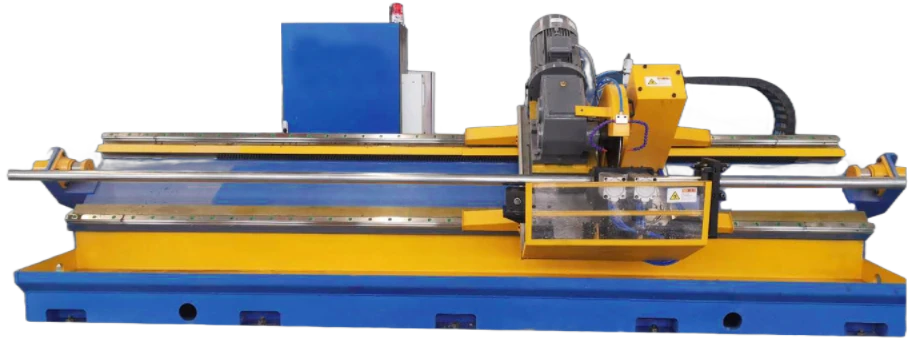Hydraulic Power Shear Applications in Industrial Metal Cutting and Processing Techniques
Understanding Hydraulic Power Shear An Essential Tool in Modern Engineering
Hydraulic power shear systems have become pivotal in various industries, particularly in construction, manufacturing, and waste management. This article explores the fundamentals of hydraulic power shear, its applications, advantages, and its impact on modern engineering processes.
What is Hydraulic Power Shear?
Hydraulic power shear refers to a mechanical device that utilizes hydraulic force to cut through materials. The core principle of hydraulic shearing involves the use of hydraulic fluid to transfer force, making it easier to achieve high cutting power without imposing significant stress on the machine components. Typically found in metal fabricating settings, hydraulic shears are commonly used to cut sheet metal, plates, and other materials with precision.
How Hydraulic Power Shears Work
The operation of hydraulic power shears hinges on Pascal’s law, which states that pressure applied to a confined fluid is transmitted undiminished throughout the fluid. In a hydraulic shear, a hydraulic pump generates pressure, which is transmitted to the hydraulic cylinder. This pressure forces the cutting blades downward, allowing for clean and efficient cuts through various materials.
The design of hydraulic shears usually consists of two blades—a fixed blade and a movable blade. The material to be cut is placed between these blades. Once the hydraulic pressure is applied, the movable blade descends, exerting considerable force that shears the material. The blades can be adjusted based on the thickness and type of the material, enhancing versatility.
Applications of Hydraulic Power Shears
Hydraulic power shears are employed across various sectors
1. Metal Fabrication In metalworking shops, these machines are essential for cutting sheet metal into required shapes and sizes. They allow for precise cuts, ensuring high-quality finished products.
2. Recycling Hydraulic shears play a crucial role in waste management and recycling facilities. They can efficiently cut scrap metal and other materials for easier processing and transportation.
3. Construction In the construction industry, hydraulic shears are used for demolishing structures and cutting through reinforcements such as steel bars. They provide the power and precision needed for effective operations.
hydraulic power shear

4. Automotive Industry Hydraulic shears are also utilized in the automotive sector for metal making and repair. They help shape and cut parts with accuracy, ensuring adherence to strict safety and quality standards.
5. Shipbuilding The maritime industry relies on hydraulic shears for handling large sheets of metal used in constructing ships, allowing for swift and precise fabrication.
Advantages of Hydraulic Power Shears
The advantages of hydraulic power shears are numerous
- Precision Cutting Hydraulic systems provide consistent pressure and control, leading to precise and clean cuts.
- High Efficiency These machines can work continuously without overheating, providing a higher output rate than manual or mechanical shearing methods.
- Ease of Use Operators can easily adjust the controls based on requirements, making hydraulic shears user-friendly.
- Versatility Suitable for a wide range of materials, hydraulic shears can slice through metals, plastics, and composites with minimal adjustments.
- Improved Safety The enclosed nature of hydraulic systems reduces the risk of injury, as operators can maintain a safe distance from the cutting action.
Conclusion
Hydraulic power shears represent a critical advancement in engineering and manufacturing processes, streamlining material cutting tasks across various industries. Their capacity for precision, efficiency, and safety makes them indispensable tools. As technology continues to evolve, the hydraulic power shear is likely to witness further innovations, leading to even greater applications and improvements in production capabilities. In an era where efficiency and productivity are paramount, hydraulic power shear systems are not just tools; they are vital components in the pursuit of excellence in engineering.
-
High Frequency Straight Seam Welded Pipe Production Line|BzZhou Xinghua|Precision Welding&EfficiencyNewsJul.30,2025
-
High Frequency Straight Seam Welded Pipe Production Line - BzZhou Xinghua|Precision Engineering&EfficiencyNewsJul.30,2025
-
High-Frequency Straight Seam Welded Pipe Production Line-BzZhou Xinghua Machinery Equipment Manufacturing Co., LTD.NewsJul.30,2025
-
High-Frequency Straight Seam Welded Pipe Production Line-BzZhou Xinghua Machinery Equipment Manufacturing Co., LTD.|Precision Manufacturing, High EfficiencyNewsJul.30,2025
-
High Frequency Straight Seam Welded Pipe Production Line-BzZhou Xinghua Machinery Equipment Manufacturing Co., LTD.|Precision Steel Pipe Manufacturing&Industrial EfficiencyNewsJul.29,2025
-
High-Frequency Straight Seam Welded Pipe Production Line-BzZhou Xinghua Machinery Equipment Manufacturing Co., LTD.|Precision Steel Pipe Manufacturing&Industrial EfficiencyNewsJul.29,2025


